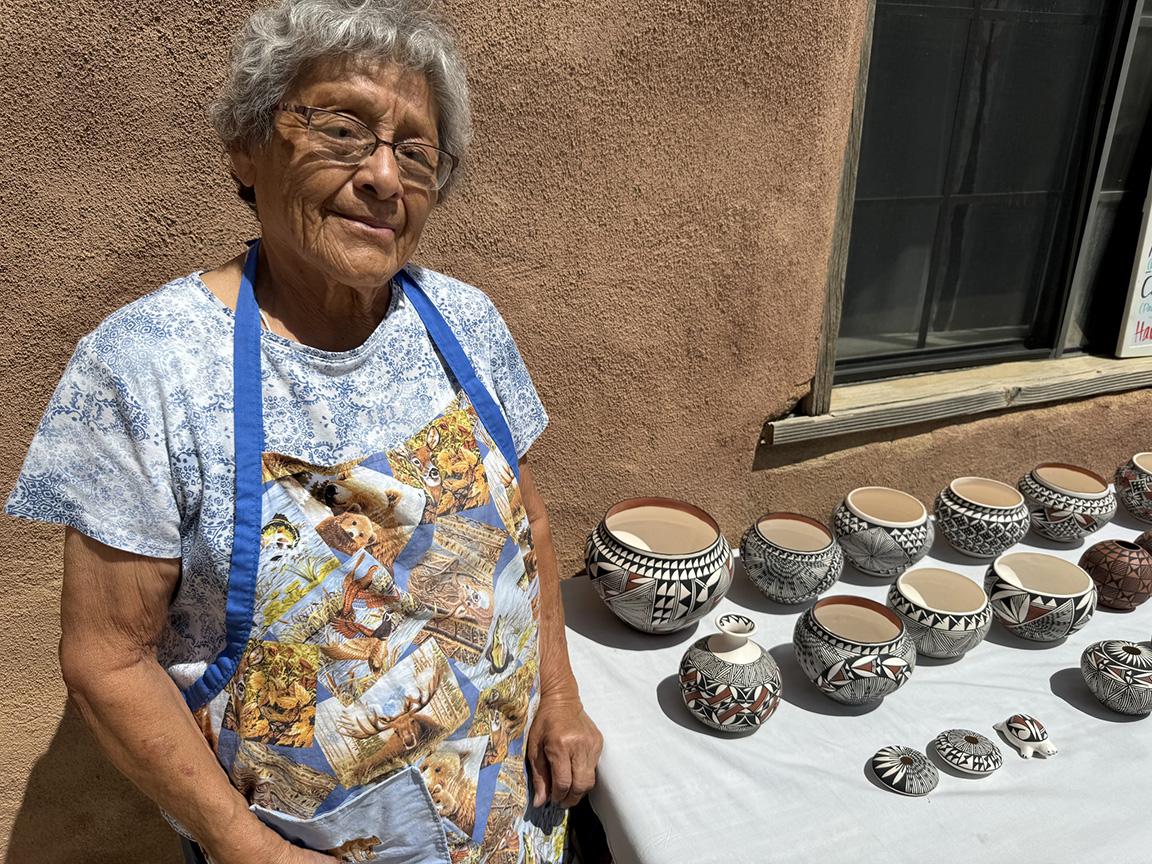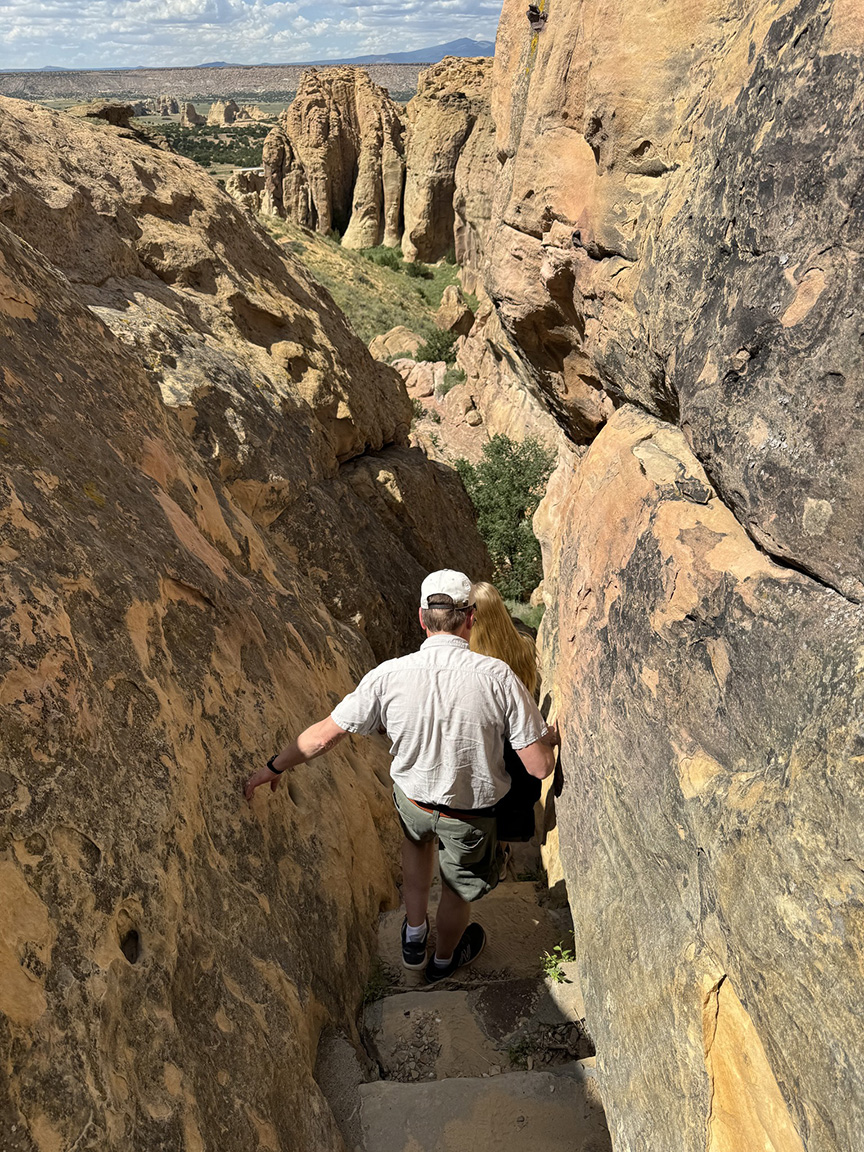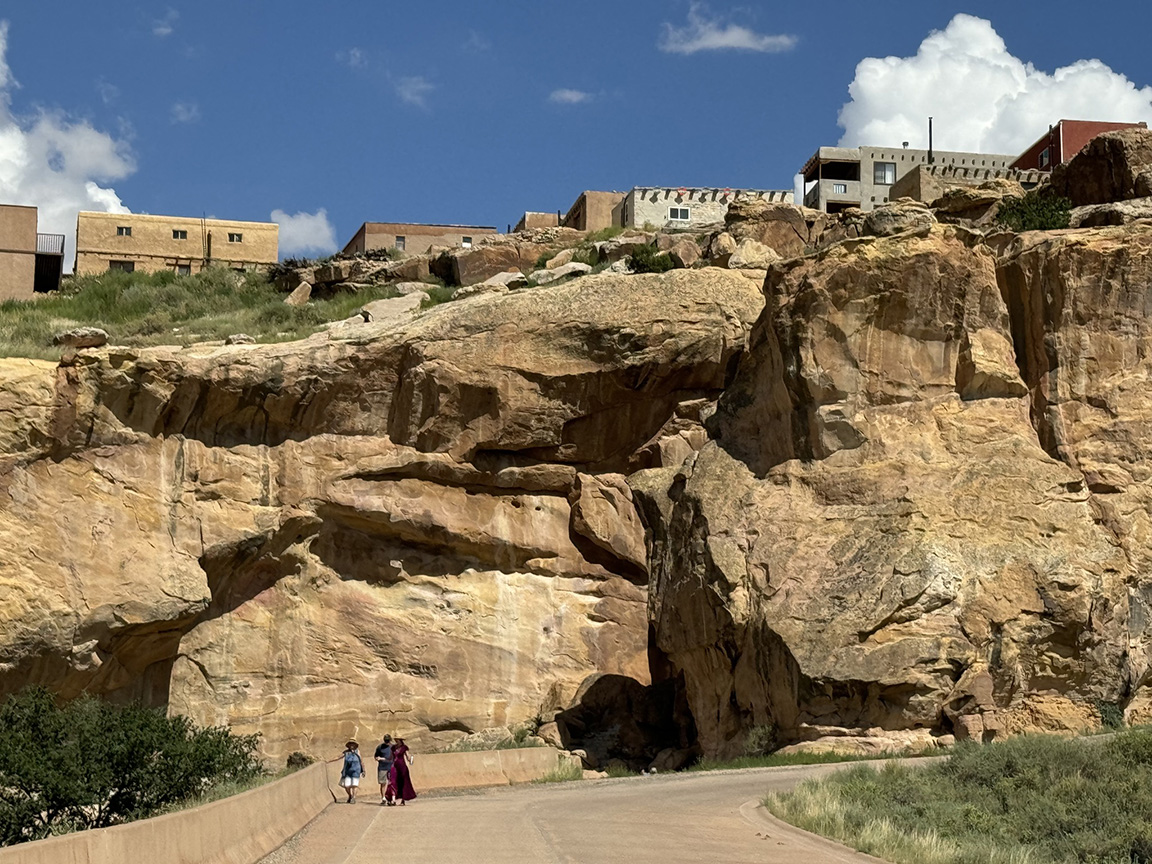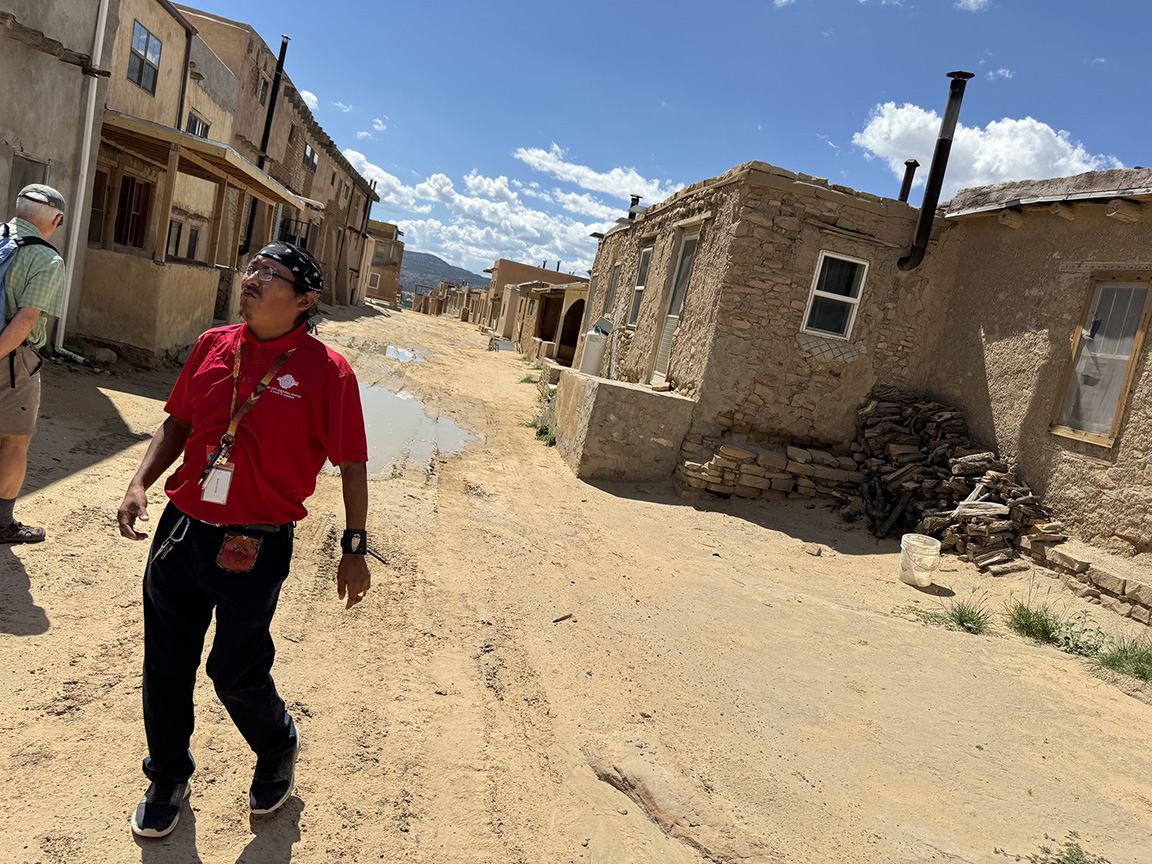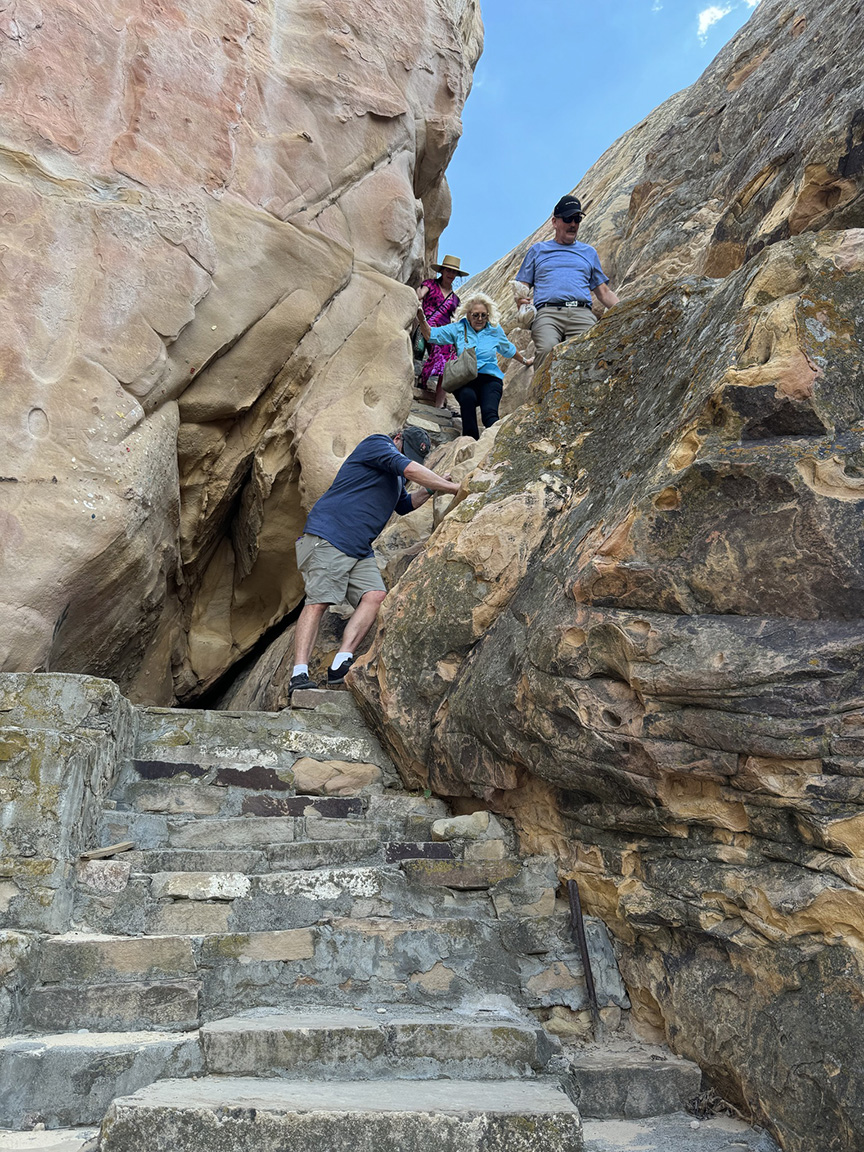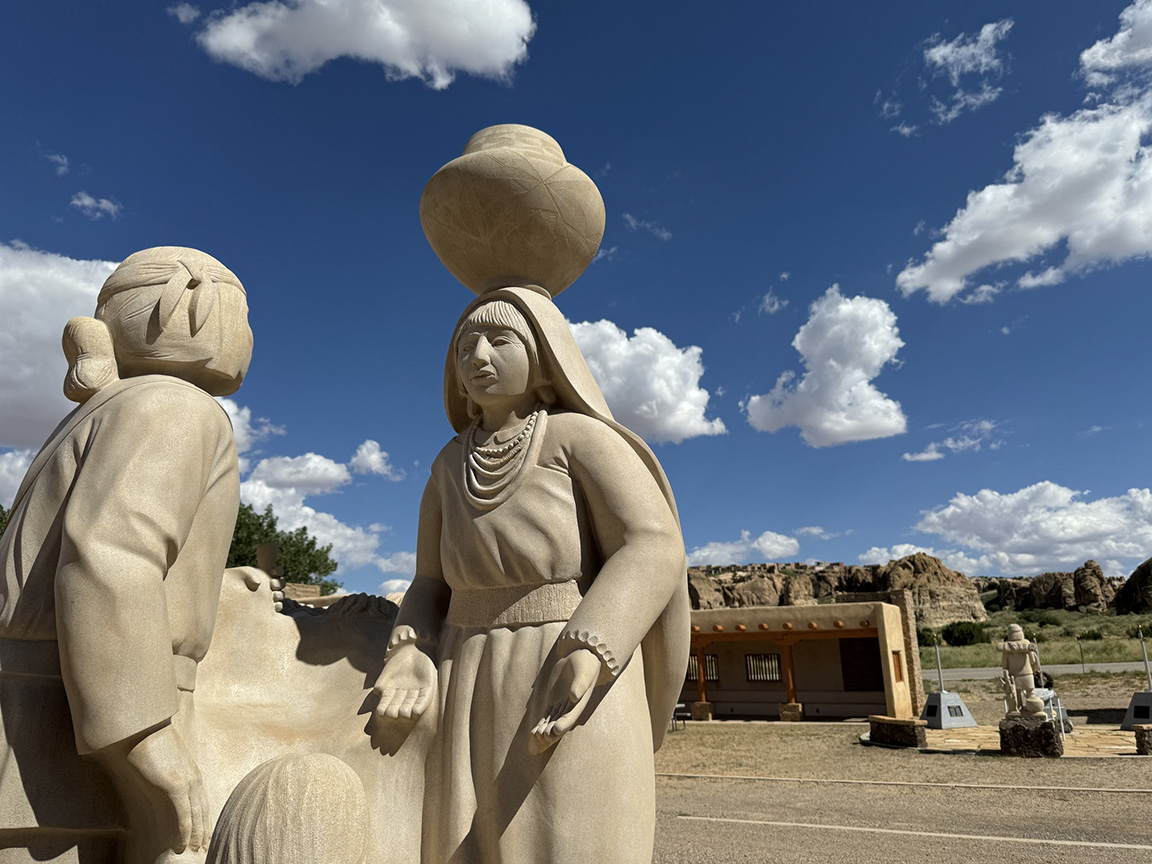
The only cottonwood tree on old Acoma mesa was planted by the great-grandfather of our guide, who gave us permission to call him Gooby. The nickname is derived from his Acoma name, which he said means early winter. You can find him on Facebook as artisan Barnett Garcia — and most days, you can find him and his spouse on Acoma mesa, where people have lived continuously since A.D. 1100. One of a handful of families who live there year round, they’re caretakers of his aunt and uncle’s home.
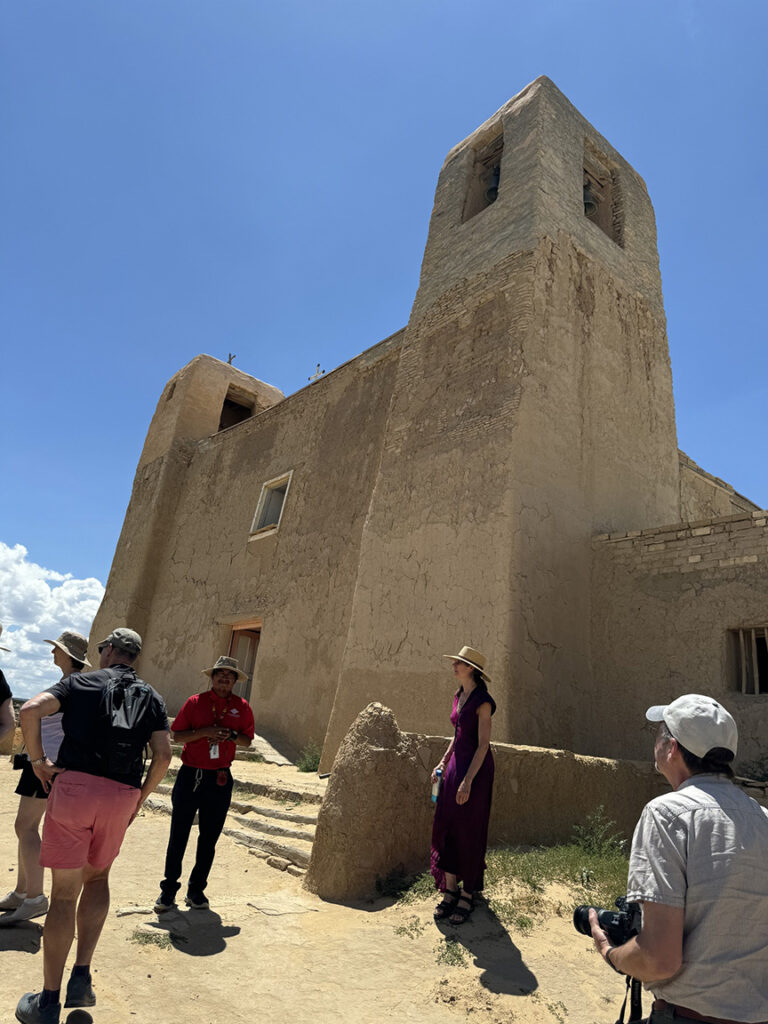 On Wednesday afternoon, Gooby took about 16 of us on a two-hour walking tour. If you are ever on I-40 between Albuquerque and Santa Fe, you want to stop here, and give it a morning or afternoon. I am offering you a money-bank guarantee. My friends, if you are reading this, Acoma is calling you.
On Wednesday afternoon, Gooby took about 16 of us on a two-hour walking tour. If you are ever on I-40 between Albuquerque and Santa Fe, you want to stop here, and give it a morning or afternoon. I am offering you a money-bank guarantee. My friends, if you are reading this, Acoma is calling you.
Tourist experiences are not generally so transformative. We knew something special was happening after we’d spent about a half-hour listening to Gooby’s voice bounce around the vast nave of San Esteban Mission Church, built nearly 400 years ago under the oversight of a stern Franciscan, Fr. Juan Ramirez. He made Acoma men carry wood for the roof beams from a forest 40 miles away and punished them if they let the wood touch the ground.
Gooby told us about the Spaniards massacring 800 villagers in 1599 and imprisoning or driving away most of the other inhabitants. He also told us about Acoma people’s participation in the 1680 southwest pueblo revolt against Spain. Indigenous people destroyed most of the churches, but not Acoma’s. Ramirez had been so set on the obliteration of people’s religion that he built San Esteban on top of their sacred sites. Afraid of desecrating them further, the rebels spared the building.
Fr. Ramirez features prominently in Willa Cather’s “Death Comes for the Archbishop,” which I revisited while driving thanks to a friend’s apt suggestion. I asked Gooby about Cather’s story of another priest the church sent to Acoma, Fr. Baltazar Montoya. Cruel and corrupt, he killed a servant in a fit of pique and, Cather writes, was thrown off the mesa to his death by his parishioners. Gooby said something like that had actually happened, though the priest in question survived, since he’d been wrapped in blankets which billowed as he fell and cushioned him just enough to survive and say he had no idea why people were so mad at him.
But Gooby didn’t leave us with the shame of religious and economic colonialism. He asked if he could play for us. He took his flute from a shelf and played for perhaps four minutes, a beautiful theme and variations in three parts. None of us has photos or video of this moment. It’s forbidden inside the church. It’s owned by the Acoma people, by the way, not a diocese. Services are still held on Good Friday, Christmas, and Sept. 2, which Gooby described as a homecoming festival to which everyone is invited, and he meant you and me. Seventy members of his extended family alone will be present. Come early, he said, and expect to eat all day.
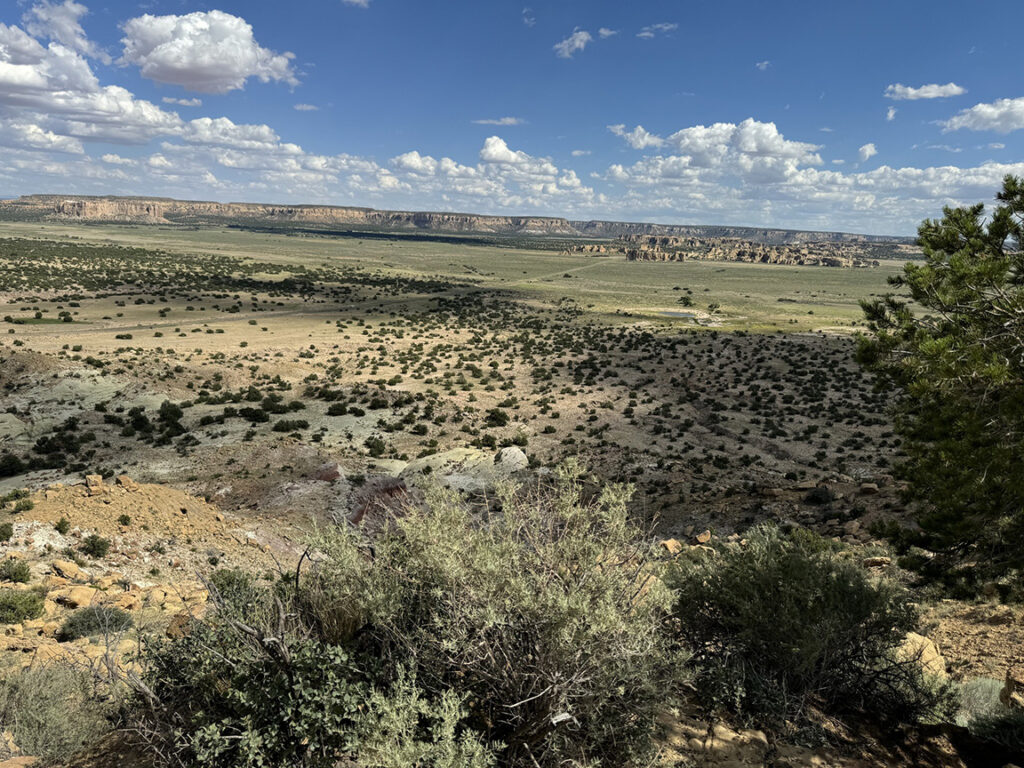 When he finished playing, he told us that we weren’t strangers anymore. We were friends, since the universe had brought us together. Whatever our beliefs, he said, if we were carrying any burdens on our shoulders, we should leave them behind us in San Esteban’s. He said the doors were strong enough to hold them in. They swing on pegs as old as the church itself. And he gently urged us to do a better job remembering that everything around us, the people and the things, they’re all gifts, all miracles, all treasures.
When he finished playing, he told us that we weren’t strangers anymore. We were friends, since the universe had brought us together. Whatever our beliefs, he said, if we were carrying any burdens on our shoulders, we should leave them behind us in San Esteban’s. He said the doors were strong enough to hold them in. They swing on pegs as old as the church itself. And he gently urged us to do a better job remembering that everything around us, the people and the things, they’re all gifts, all miracles, all treasures.
We put these principles into practice right away. Bidding us farewell, Gooby gave us the option of riding back down to the Sky City Cultural Center in the van or, he said lightly, taking the stairs. Half of us opted for the stairs — which proved to be one of the harrowing passages Willa Cather described as the mesa’s key defense, since no fighter could ascend quickly. We helped one another down using handholds people have dug out beginning a millennium ago. Making it to the bottom, we knew we had been to sky city. Thanks to Gooby, we are taking it home with us.
